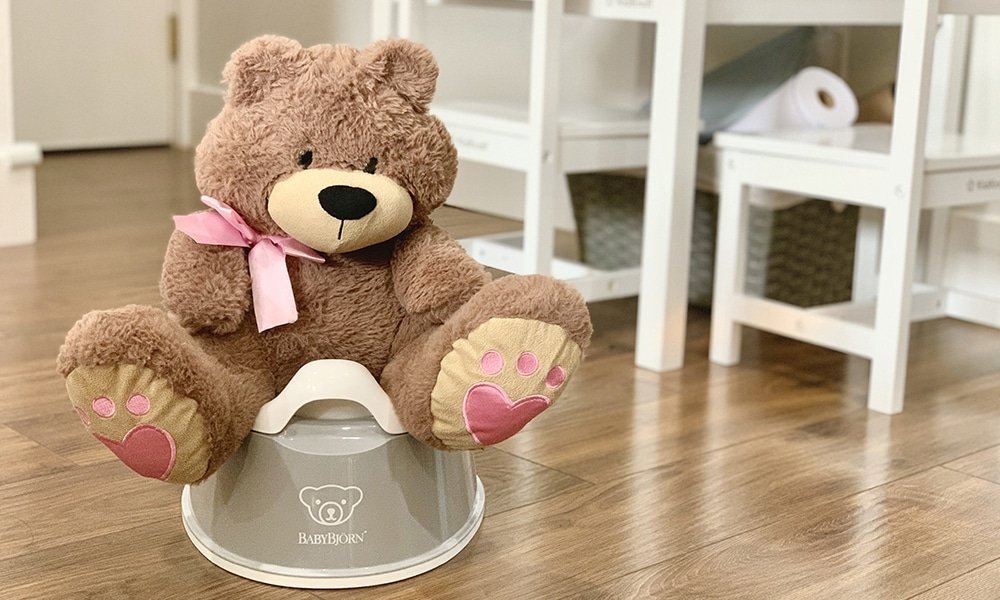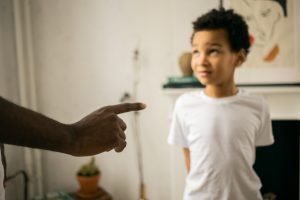There’s no concrete answer to when the ideal potty training age is. Pediatricians have stated different age range, from 18 months, 24 months, to 36 months. Stanford Children Health said the average age of toilet training is 27 months. We found that the best indicator that a toddler is ready for potty training is the milestone signs they show while still in their diaper.
My wife and I started potty training our little girl a couple of weeks ago. At 27 months, she did pretty well transitioning away from diapers. It took about 3 days for her to get acquainted with the new norm.
The first day was about showing her the way.
The second day we met resistance.
The third day she compromised by accepting the new norm while still sounding out her disdain for the potty.
Overall, I think we did okay with this potty training stuff.
Like snowflakes, every toddler is different. So we can assume every toddler will differ in readiness. This also means there’s no silver bullet manual when it comes to potty training.
The best thing we can do is absorb all the information and experience other parents or caretakers have gone through, listen to a pediatrician’s advice on how to approach potty training, and keep your fingers crossed that things go smooth.
What Is Potty Training?
Potty training has two parts to it.
The first is teaching your child to recognize their body signal to pee or poop.
The second is teaching them the appropriate action after recognizing the signal: to go to the potty, sit on the potty, and do their business.
When thinking about potty training your little one, there are times you’ll feel some apprehension when preparing.
So it’s always good to remember that you’re not alone in this. All you can do is prepare the best you can and keep in mind to enjoy the journey with your little one.
Let’s also not forget, potty training is a rewarding accomplishment that comes with benefits.
A positive thing that we’ve seen with our little girl is the reduction of diaper rashes (doesn’t help that she also has eczema). 2 weeks after the training session, her skin showed significant improvement.
The transition away from diapers means buying less to zero diapers. I’m sure all parents can appreciate the savings. Research also shows ditching the diapers decreases the risk of infections such as UTI or yeast.
What Are the Signs That Your Toddler Is Ready For Potty Training?
This Section Is Authored By Jasmin
Ah, the burning question on the minds of nearly all parents of toddlers: How do I know when my child is ready for potty training?
I’m sure there are unicorn toddlers out there who will follow their parents into the bathroom one day, pull their pants down, yell “pee!” and actually proceed to pee in the potty/toilet.
For most of us, it’s something we have to determine based on signs our child gives us, as well as a strong parental instinct. (And really, most importantly, whether WE as parents are ready–but this post isn’t about that.)
I had a feeling Addie (our little one) was ready well before I actually set a plan in place.
She exhibited signs such as:
- Hiding to poop (this is a STRONG sign of readiness, according to the research I did)
- Having a dry diaper for over 2 hours
- Copying our actions when we use the bathroom
- Looking down at her crouch in the middle of peeing (indicating that she was aware of what her body was doing)
- Showing discomfort when her diaper was too full or after she’d pooped, and subsequently:
- Actively telling us to change her diaper
There are signs that Addie didn’t show, but other children could exhibit:
- Hiding to go pee
- Showing an interest in wearing underwear
- Showing an interest in toilets/potty chair
Even though some kids show all the signs that they’re ready for potty training, there are some pre-requisites a child needs to reach before attempting to potty train:
- Being able to walk and sit well
- Being able to communicate simple needs
- Being able to follow simple instructions
Looking back at it now, we probably could have started much earlier based on the signs above (she was 27 months when we did). Still, I had to spend time reading up on the topic and feel confident that we could do it. And after reading the potty training book of choice, I was assured that she was, in fact, ready.
Aside from the pertinent pee/poop signs above, Addie was also able to communicate her needs and wants and understand directions well, so I knew that cognitively she was ready too.
As of this writing, it has been about 5-6 weeks since we started potty training. The weekend we started, I took off a Friday and a Monday from work so we could have a nice four-day period to jump into it, and incredibly (but not unsurprisingly–because I KNEW she was ready!) she’s been accident-free since Day 3.
We have not done night training yet (she is happily in a crib still, and I am not ready to sacrifice sleep to wake her up in the middle of the night to go pee), so there’s more work to do. Still, we’re extremely happy and proud of her progress.
What we will work on for the future:
- Get her to push her pants down and pull them back up herself
- Get her to climb up to the big potty (i.e., toilet with an insert) herself
- Clean herself up after going to the potty (I fully recognize it may be years before this happens)
- Night training
Potty Training Age
At the beginning of this post, I said that there isn’t an established potty training age to determine when potty training should take place, but it’s determined by the milestone signs that your little one is showing.
While that holds true, having an age range gives parents an alert when it’s time to read up and evaluate if their child is ready.
Mayoclinic has the age range of many children showing signs of readiness between 18 and 24 months. There was also a disclaimer that some children may not be ready until they’re 36 months.
Stanford Children’s Health said most children don’t have bowel or bladder control until 24 to 30 months and that the average potty training age is 27 months.
Potty Training Girls
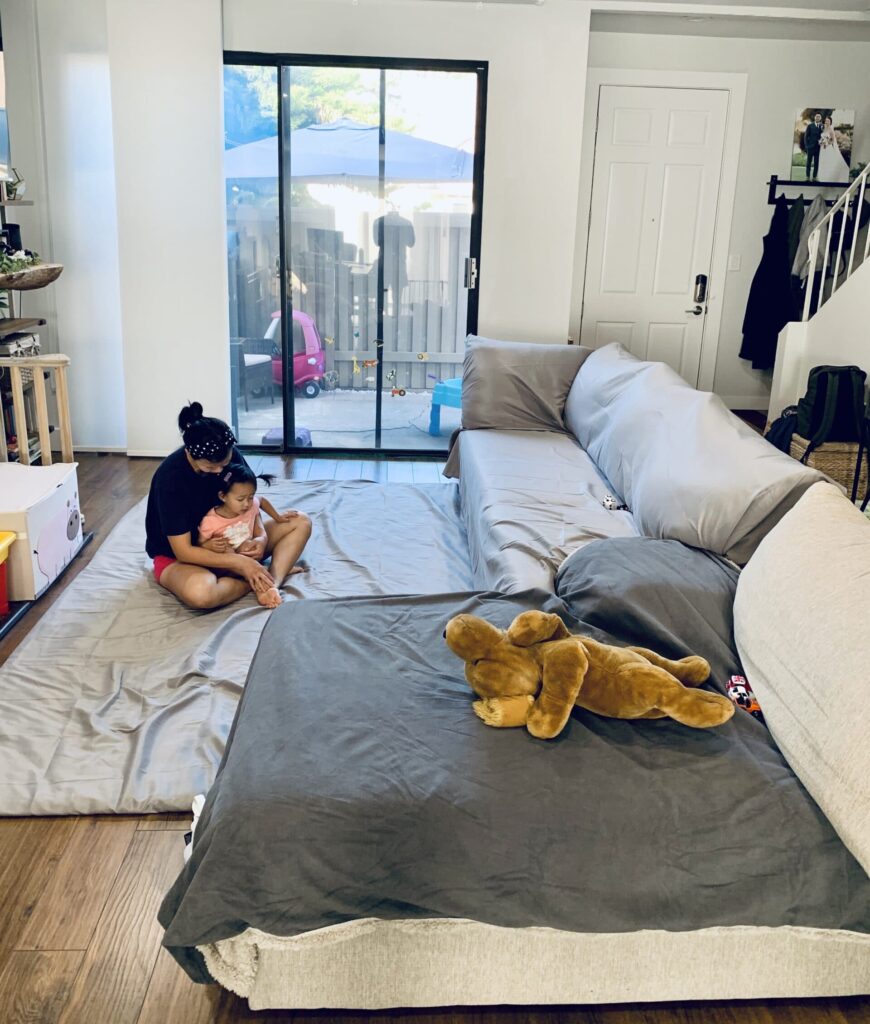
Disclaimer – Our experience with potty training is specific to our daughter, who is 27 months old at the time. This experience is for day training as she still wears a diaper overnight. We don’t plan on night training her just yet until she is ready for a toddler bed.
The things listed above apply to both girls/boys. Still, in research about potty training and notes about other parent’s experiences, potty training girls differ from potty training boys. Boys could be more difficult to potty train.
Training boys comes in 2 phases, as they first learn how to sit on the potty. After mastering the potty by sitting, they then learn how to use the potty standing up.
Regarding our experience, after the 3-day potty training session, our little one does very well to indicate to us whenever she needs to pee. She’s exceptional when peeing on the potty/toilet.
Pooping is a different story, as we’ve been successful maybe 2/3 of the time. She would indicate to us that she needs to poop, attempts to sit on the potty but does nothing and leaves the potty running. Sometimes she poops in her diaper when she wakes up in the morning. So she definitely needs more hand-holding and encouragement when it comes to pooping, but she is getting better every day.
Potty Train Preparation
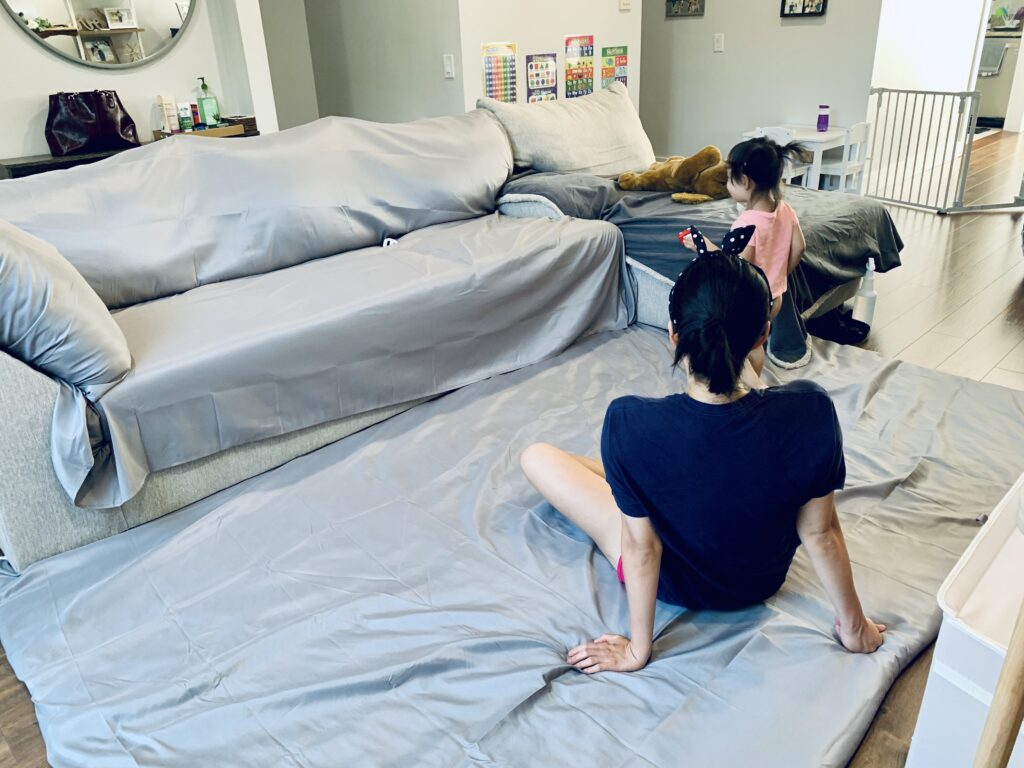
We wrote a separate post for potty training essentials that worked for us.
In the post, we list the things we bought that helped our little one through this journey. We also list alternative items recommended by family and friends that worked for them going through the same journey.
Preparation for potty training goes beyond having the gear and cleaning supplies. Creating an environment and situation for your little one and giving 100% of your attention is just as important.
Preparation could comprise:
- Know the potty training method you’re going to use
- Have a cheat sheet to reference or troubleshoot
- Set a date for potty training
- Take a couple of days off work (if possible, so you can be there for the whole potty training experience)
- Plan on takeout instead of cooking because potty training is mentally and physically taxing
- Prepare your little one (before the potty training)
- Show the little one their potty
- Let them know the area their potty will be at
- Let them play with their potty
- Teach them how to sit on their potty (with their clothes on)
- If they like to follow you to the restroom, show them that this is how you pee
My wife took days off from work to ensure that she can give her all into this journey with our child.
I work from home, so I’m there to assist my wife and the little one with whatever they need.
My wife read up and knew what training method she would use. She printed out a cheat sheet to use it as a reference on the to do’s, don’t do’s, and progress phases.
We set up our living room area as her potty training zone. We covered up our couch and rug with water resistance sheets.
Days before potty training, we showed our little one the new potty and how she would sit on it. Every time we knew she was peeing or pooping (in her diaper), we let her know what she was doing to associate what she’s doing with the words pee or poop.
Our little one often goes into the restroom with us to see what we’re doing. We show her that this is how we pee (I also sit down to pee, for teaching).
Going into potty training, we knew this was going to be messy. We understood how difficult it would be and expect resistance every step of the way.
We realize it was going to be exhausting for us and the little one. We knew our little one would not like this, but we had to let her know that it’s okay because she’s becoming a big girl.
With the mental and physical preparations completed and online/book research about potty training done, it was still more than we expected.
It was difficult for my wife as our little one clung on to her most of the time. We met a lot of resistance, which made me think that maybe she’s just not ready.
My wife (the much stronger one) said we just got to keep moving forward and she’ll eventually get it. Every minor victory was progress and we have to keep pushing.
She was right because by the 3rd day the little one was getting the hang of things. It paid off and now our little girl is potty trained.
Potty Training Tips
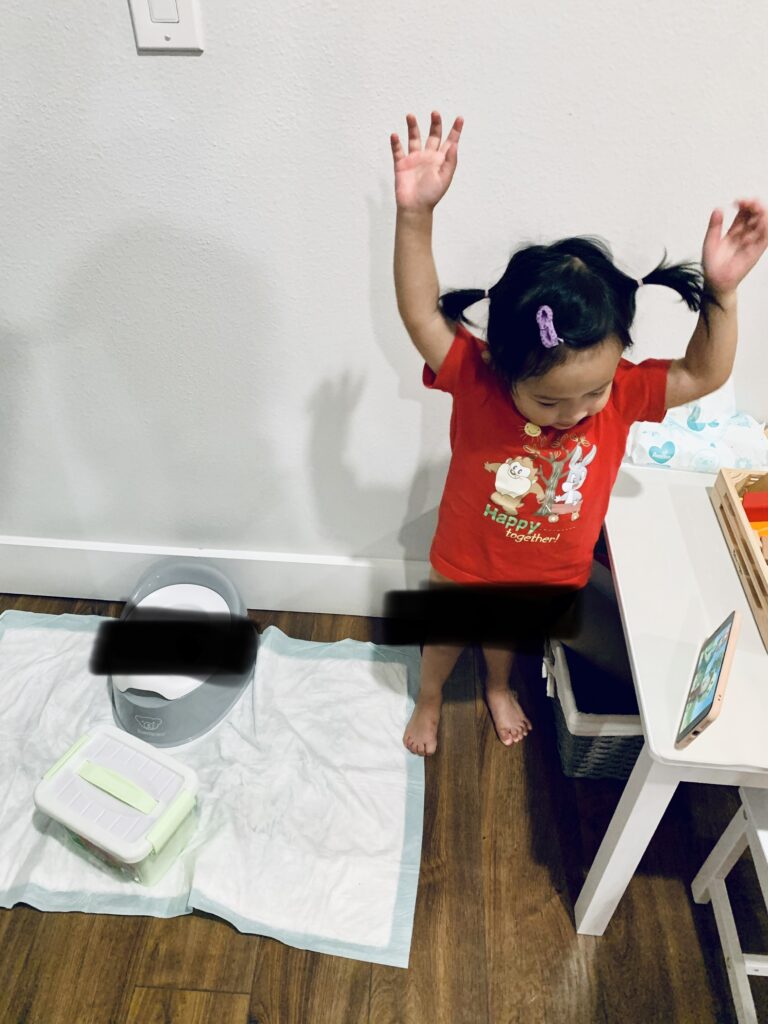
Here are some tips that worked for us:
- 1st day of potty training, have your child wear no bottoms
- Learn and pick up on the signs of needing to use the potty
- When your child shows a pee or poop indicator or dribbles of pee, let them know “we’re going to sit on the potty“
- When your child shows an indicator that they may need to go potty but stubbornly don’t, have them copy you by using the toilet yourself
- Make potty a routine like washing your hands before dinner. “Let’s go to the potty before we go outside”
- If there’s ever a time to be patient, it is when you potty train your little one. Don’t show your frustration.
- The critical thing in this total experience is encouragement. In our case, we celebrate and say “yay!!!” every time she pees or poops, and she seems to enjoy the praise.
- Celebrate your “yay!” by asking your child to help with emptying the pee or poop into the toilet and having them flush it. If you’re not using a potty seat, then ask them to help flush the toilet.
- If your child is taking tiny steps towards actual progress, don’t be discouraged and keep moving forward
Potty Training Challenges
Here are some challenges that we encountered:
- Resistance…a lot of resistance
- Our little girl was very clingy to my wife, at every waking moment
- Mentally taxing
- Discouraging when your little one resists, but we got to remember that all parents alike have gone through or are going through a semblance of this very same thing
Final Thoughts on the Ideal Potty Training Age
As you read up and research potty training, remember that even if you’re ready to potty train your child or think they’re at the right potty training age, make sure they’re letting you know that they’re ready. Use age range as a guide and the child’s milestones as an indicator.
There’s no shame in a child starting early or late. Let them show you they’re ready. It’s also imperative to make sure you’re ready.
Our experience is one of many. It’s okay to feel discouraged and frustrated, we’re all in this together. Potty training is just another milestone that we all encounter at some point in time.
